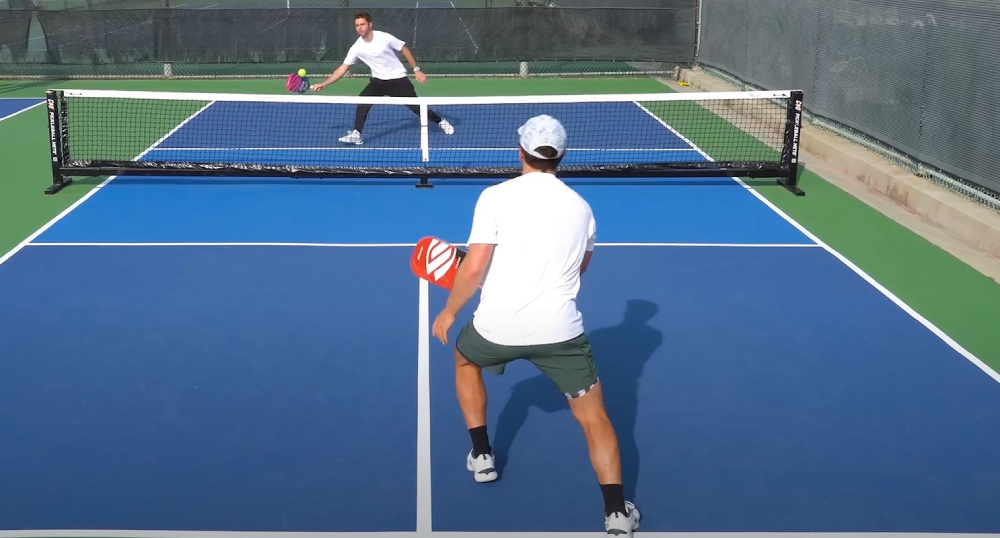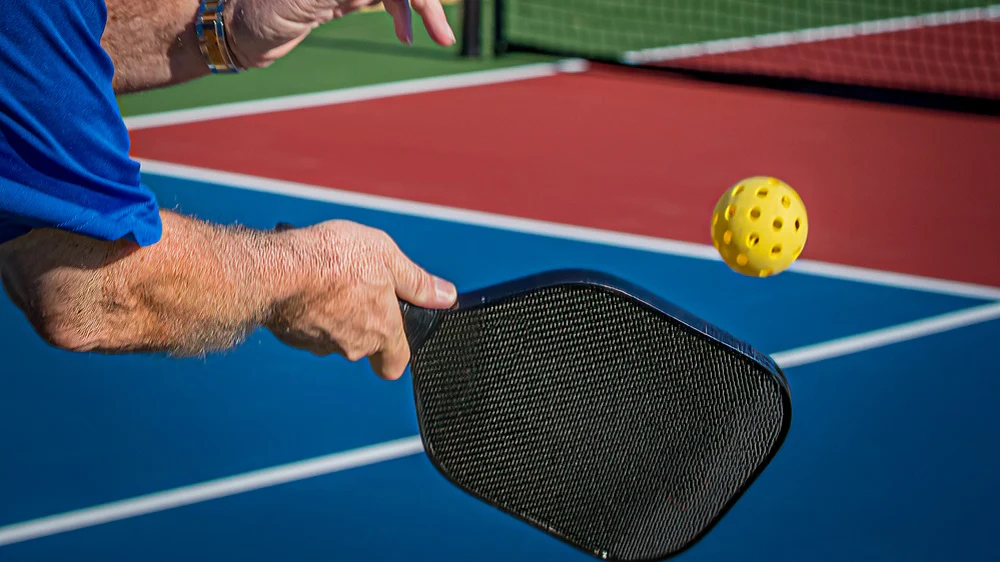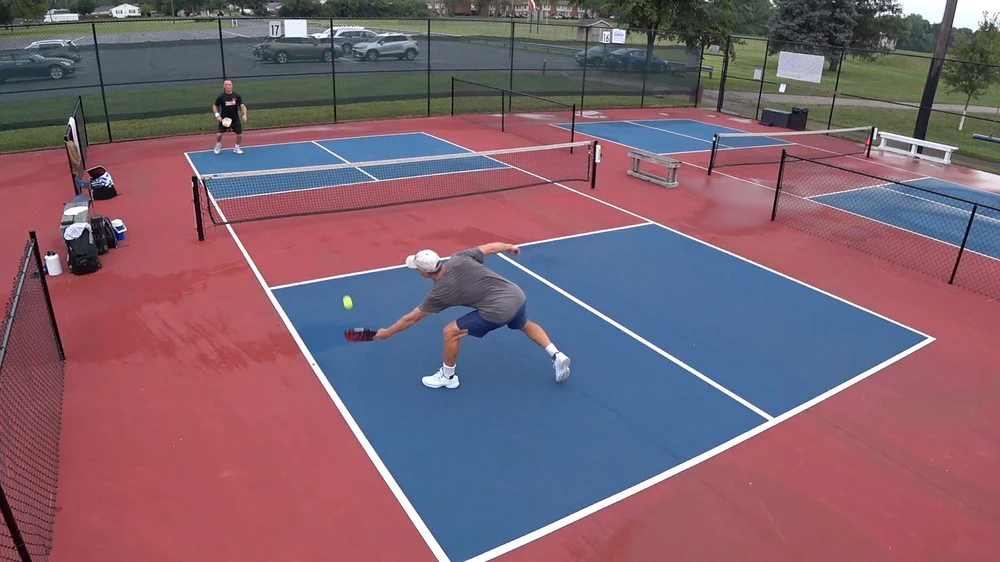Singles pickleball is fast-paced, physically demanding, and packed with strategy. If you’ve only ever played doubles, switching to singles might feel like a whole new sport. In this guide, we’ll break down the basic rules for pickleball singles, compare it to doubles, walk you through serving pickleball singles rules and teach you winning strategies for singles pickleball court positioning.

Content
How Singles Differs from Doubles in Pickleball
You might think singles and doubles share all the same rules—but there are key differences that impact how the game flows.
Fewer Players, More Responsibility
In singles, you don’t have a partner to rely on. You’re covering the entire court yourself, so your footwork, positioning, and shot selection must be on point.
Similar Rules, Different Execution
The fundamental rules of pickleball still apply in singles—serves must be underhand, and games are typically played to 11 points. But the execution differs, especially when it comes to movement and angles. These differences are why understanding pickleball singles vs doubles rules is so important for players transitioning between the two formats.
Court Dimensions and Equipment for Singles

Court Size
You’ll play on the same 20′ x 44′ court used in doubles. But without a partner, you’re responsible for the entire side. That means your stamina and positioning matter more than ever.
Gear Up
Use a paddle that gives you a mix of control and power—singles play often demands longer baseline rallies and faster footwork. Make sure your shoes offer excellent grip and ankle support.
Basic Rules for Pickleball Singles
Let’s get into the meat of the game. If you’re new, these are the basic rules for pickleball singles that you absolutely need to know.
1. Scoring System
- Games are played to 11 points.
- You must win by 2 points.
- Only the server can score points.
2. Serve and Serve Rotation
- The server starts on the right side of the court.
- If the server wins the point, they switch to the left side and continue serving.
- The server keeps alternating sides as long as they score.
- If they lose a rally, the serve goes to the opponent.
Serving Pickleball Singles Rules

The serving rules in singles pickleball follow these guidelines:
Serve Diagonally
Just like in doubles, the serve must go diagonally to the opponent’s service box. However, because it’s just one-on-one, the pace is much quicker and more aggressive.
Even/Odd Rule
- When your score is even, serve from the right side.
- When your score is odd, serve from the left side.
This helps you remember your serving position and ensures fairness in court coverage.
No Second Serve
Unlike some racket sports, you only get one serve attempt. If it’s your fault, the point goes to your opponent.
Pickleball Singles Rules for Court Positioning
Without a partner, you need to master singles pickleball court positioning to stay competitive.
Stay Centered After Serve
Once you serve, move toward the middle baseline. This lets you cover both sides and respond to returns efficiently.
Push Forward When You Can
If your opponent gives a short return, approach the net quickly. Net play increases your angles and gives you a better chance of finishing the point.
Cover the Angles
Anticipate where your opponent can hit. Stand a step or two behind the baseline when receiving to be ready for deep returns, but adjust your stance as the rally evolves.
Strategies to Win at Pickleball Singles

Having solid technique isn’t enough. Use these tactical approaches to gain an edge:
1. Serve with Intent
Your serve should be aggressive but accurate. Aim deep to push your opponent back and limit their shot options.
2. Use the Entire Court
Don’t just hit it back. Aim for sidelines and corners to force your opponent to run, creating openings for winners.
3. Master the Drop Shot
A soft shot that just clears the net can bring your opponent forward, setting up a passing shot or lob.
4. Stay Mentally Sharp
In singles, the margin for error is smaller. Keep your focus and read your opponent’s movement to anticipate shots.
What Is Skinny Singles?
You may have heard of Skinny Singles—a popular training variation of the game.
In Skinny Singles, you only use half the court. This makes it ideal for practicing precision and control. It’s also a great way to play when there’s only one court available or when you’re training alone with a coach or friend.
Why Learn Pickleball Singles?
Playing singles improves your:
- Cardio and endurance
- Court awareness
- Shot accuracy
- Mental toughness
If you’re serious about improving, mix singles into your routine even if you prefer doubles.
Final Thoughts
Understanding the pickleball singles rules gives you a competitive advantage and sets you up for more enjoyable play. From serving rules in singles pickleball to smart singles pickleball court positioning, mastering the fundamentals helps you dominate the court. Whether you’re switching from doubles or just starting out, use this guide to build your singles game from the ground up.
Find out how to easily play pickleball on a tennis court with simple adjustments and proper court setup.
FAQs About Pickleball Singles Rules
1. Can I use the same paddle for singles and doubles?
Yes, you can. However, in singles, many players prefer paddles with a longer handle and extra power to help with deeper baseline shots.
2. Is singles or doubles more competitive in pickleball?
Both can be highly competitive, but singles often demands more physical endurance and solo strategy, making it more intense for many players.

Emily Harris is your ticket to the sports world. From thrilling competitions to heartwarming sportsmanship, she’s got you covered with her extensive sports insight.
